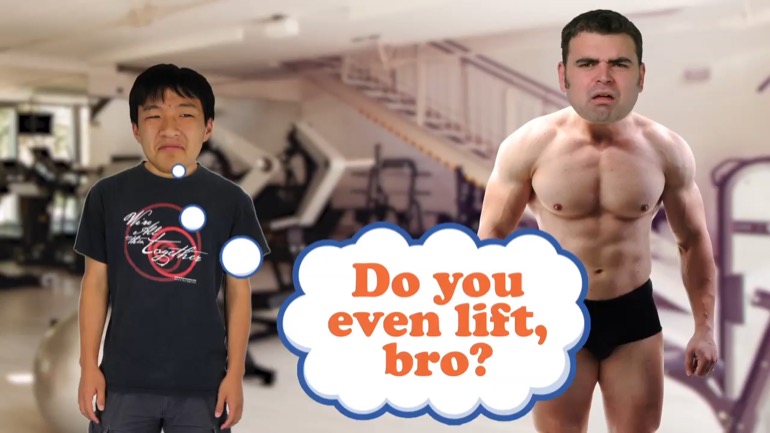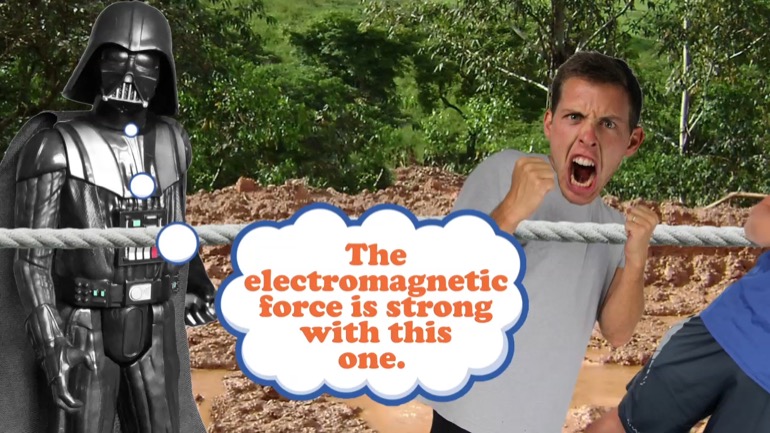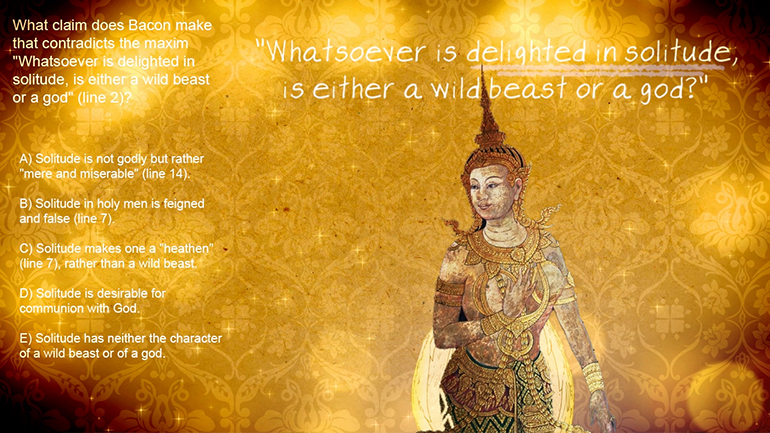ShmoopTube
Where Monty Python meets your 10th grade teacher.
Search Thousands of Shmoop Videos
Physics Videos 34 videos
Isaac Newton. Who was he? Why do we need to know about him? In a physics course, no less? Well, he's only the most famous physicist in history, and...
What are the basics of trigonometry? And why are we learning about this in a physics course? Both good questions. In this video, you'll learn about...
It's time to make our liters and meters work together. Enough of the bickering, right? In this video, we'll do some unit analysis, covering SI Unit...
Physics: Putting Momentum and Energy Together: Let’s Bang Stuff Against Other Stuff 689 Views
Share It!
Description:
What is the second law of thermodynamics? That's the one about a Thermos being the most dynamic of all drinking containers, right? Uh, wrong. Basically, it has to do with entropy, chaos, and heat, oh my.
Transcript
- 00:01
No the second law of thermodynamics Why making a mis
- 00:06
is just part of physics into chaos Cleaning doesn't violate
- 00:14
the laws of physics But your parents The key to
- 00:21
a happy life is to make sure everything is in
- 00:24
its place But you spend most of your waking life
Full Transcript
- 00:27
making sure things are organized and properly stored The rest
- 00:31
of your life will be so much happier and sure
- 00:33
you could take this advice too far Theoretically But we
- 00:36
have to do everything we can to fight disorder because
- 00:38
the universe is fighting back against us Stupid messy universe
- 00:42
What does a clean bedroom have to be with physics
- 00:44
to answer that question let's talk about thermodynamics The first
- 00:48
law of thermodynamics says that energy can't be destroyed or
- 00:51
created All the energy in the universe already exists It's
- 00:54
not going anywhere And no new energy is going toe
- 00:58
walk through the front door The second law of thermodynamics
- 01:00
actually has a few different definitions or different ways We
- 01:03
can understand it Have you ever dropped a few ice
- 01:06
cubes in a glass of soda and then forgot it
- 01:08
on the counter I haven't But let's assume you have
- 01:11
when you come back It's a gross water down disaster
- 01:13
What happened Heat transfer happened That's what heat moves from
- 01:16
the warmer soda into the colder ice Cubes making them
- 01:19
melt so why didn't it work the other way around
- 01:22
Why didn't the heat go from the ice cubes of
- 01:24
the soda Sure the ice cubes are super cold but
- 01:27
they still have internal energy but it would be pretty
- 01:29
freaky if you put ice and soda and the ice
- 01:32
somehow got colder and yeah turns out that never happens
- 01:35
It's actually impossible it would break the second law of
- 01:38
thermodynamics One way to explain the second law is to
- 01:41
say that he'd always flows from a higher temperature system
- 01:44
to a lower temperature system and it never ever goes
- 01:47
the other way around That just makes sense it's one
- 01:50
of those things that's so obvious you wonder why they
- 01:52
even had to write it down I'm not judging but
- 01:54
it turned out that the second law is a little
- 01:56
more complicated than that because the second law of thermodynamics
- 01:59
is really about entropy which is a fancy science word
- 02:02
for disorder or chaos The best definition of the second
- 02:06
law of thermodynamics is as follows in all natural processes
- 02:10
The total entropy of a system and its surrounding environment
- 02:13
either stays the same or increases entropy Never decreases To
- 02:18
put that a normal person speak things always become more
- 02:21
disorderly if we consider both the system and the environment
- 02:24
around them Let's say it's a wonderful day for fun
- 02:27
and we get to spend eight hours organizing the house
- 02:31
It doesn't get any better than that does it Just
- 02:33
a full day of organizing and tiding by the time
- 02:36
you're done it's almost as if you can't detect any
- 02:39
sign of human life at all It's perfect it's Wonderful
- 02:42
it's Sorry What was i saying Oh right entropy So
- 02:46
we just showed that there can be less disorder in
- 02:48
the universe At least here in our little pocket of
- 02:51
it Right Sorry But now first of all any time
- 02:53
you have that much fun you're going to work up
- 02:55
a sweat That means heat came off of you and
- 02:58
went into the air And when you heat molecules up
- 03:00
they move around and vibrate and just get all worked
- 03:02
up which means they get more chaotic and as you
- 03:06
scurry around putting things away had also disturbs molecules in
- 03:09
the air opening and closing dresser drawers putting things on
- 03:12
hangers The joyful act of throwing junk Away all of
- 03:14
that involves friction which means heat which means chaos There
- 03:18
is no escaping it it's enough to drive you crazy
- 03:21
but we don't get crazy because crazy is chaos and
- 03:23
chaos is the enemy keep calm and clean on another
- 03:26
example of this happens when we have a bouncy ball
- 03:28
We've all played with one of these super balls that
- 03:31
bounce like crazy right If you drop a super ball
- 03:33
without adding any extra energy to it it'll bounce back
- 03:36
up pretty high but it won't bounce all the way
- 03:39
back up to where it started Part of that is
- 03:41
due to gravity Part of that is also due to
- 03:43
entropy right before the ball hits the ground It's got
- 03:46
a lot of kinetic energy as it hit the ball
- 03:49
do forms a little creating elastic potential energy Then it
- 03:53
snaps back into its original shape which is why it
- 03:56
bounces back up into the air The ground also deformed
- 03:59
a little bit too And all of this d formation
- 04:01
makes the molecules all jumpy So some of the kinetic
- 04:04
energy of the ball is transferred into internal energy of
- 04:07
the ball and the ground internal energy Means ah higher
- 04:11
temperature And in fact if you had some thermometer keeping
- 04:14
track of the super ball you'd see it tick up
- 04:16
just a little bit like one or two tenths of
- 04:18
a degree Maybe the ground's temperature would go up a
- 04:21
teeny bit too Since some of the kinetic energy is
- 04:23
converted into internal energy the ball loses some goof on
- 04:27
its bounce and you guessed it more chaos is created
- 04:30
There's just no way around it Okay Circling back How
- 04:33
is entropy related to our first explanation of this thermodynamics
- 04:37
law Remember we said that heat flows from the warmer
- 04:40
system to the cooler system Think of it like this
- 04:43
which is more orderly A block of ice or a
- 04:45
bowl of water It's the ice without a question Molecules
- 04:49
and a solid are tightly aligned there's no molecular slipping
- 04:52
and sliding like you havin a liquid and in general
- 04:55
a colder system has less chaos than a warmer one
- 04:58
The molecules are moving more slowly they're vibrating less their
- 05:01
little molecular shoes air neatly stacked up Ah hot system
- 05:05
means chaos galore Molecules banging into each other electrons flying
- 05:09
around willy nilly shoes never being put Away oh it
- 05:12
makes me it's just thinking about it Entropy will always
- 05:15
increase or stay the same If heat float out of
- 05:18
a cooler system and into a warmer system that would
- 05:20
mean the colder system would become more orderly That's never
- 05:24
going to happen Another way to think about the second
- 05:26
law of thermodynamics is toe pop the hood on your
- 05:28
car assuming you don't have an all electric car than
- 05:31
your engine has pistons which means it depends on heat
- 05:34
which makes it well a heat engine and an internal
- 05:37
combustion engine just like the one in this car has
- 05:40
pistons A piston basically hangs out in a hollow cylinder
- 05:43
at the top of the cylinder The piston is like
- 05:45
a plunger that creates a tight seal to keep all
- 05:47
the air inside So we've got gas inside the pittston
- 05:50
just hanging out doing it gas thing when suddenly a
- 05:53
heat source appears This makes the molecules in the gas
- 05:56
get excited and less dense which creates pressure in the
- 05:59
piston which pushes the piston up which makes the gears
- 06:02
of the engine turn which makes the wheels turn And
- 06:04
what do you now you're driving on The highway at
- 06:06
a sensible speed of course five miles under the speed
- 06:09
limit is best Okay so the gas expands greatjob gas
- 06:12
But if this process happens only once that's not going
- 06:15
to get you very far things have to cool down
- 06:17
so the piston khun sink back down and the whole
- 06:19
process can repeat it in a car This happens hundreds
- 06:22
of times a minute Where does that heat go Bingo
- 06:25
Out of the tailpipe any kind of heat engine has
- 06:28
to be able to dump heat into what's called a
- 06:31
reservoir In this case reservoir doesn't mean a big lake
- 06:34
full of drinking water It means something big enough to
- 06:36
be able to absorb all the heat that the engine
- 06:38
needs to get rid of In the case of a
- 06:40
car that means the heat goes through the tailpipe and
- 06:42
out into the atmosphere The atmosphere is big enough that
- 06:45
heat from a car doesn't have much effect on the
- 06:47
overall temperature Of course when you have a bunch of
- 06:50
cars with a bunch of pollution and greenhouse gases well
- 06:53
that's a topic for another much more depressing video With
- 06:56
the pistons going up and down we know that force
- 06:58
is being applied and things are moving which means work
- 07:01
is being done but since all the heat that's generated
- 07:03
is dumped into the exhaust system this process isn't one
- 07:06
hundred percent efficient And that brings us up to our
- 07:09
third and final way of looking at the second law
- 07:12
of thermodynamics It's impossible for a heat engine to convert
- 07:15
heat completely into work without any other effect In fact
- 07:20
there's a nice and clean equation to go along with
- 07:22
this idea the efficiency of a heat engine that's what
- 07:25
the epsilon stands for equals the work done w divided
- 07:29
by the heat that's input that's the cue sub h
- 07:32
because he can't be totally converted into work work will
- 07:36
always be less than the heat input and efficiency will
- 07:40
always be less than one Not everything in life is
- 07:42
about cars you know no matter what you're one uncle
- 07:45
who's obsessed with hot rods might say here's a basic
- 07:47
diagram of how another type of heat engine works We've
- 07:50
got a high temperature reservoir on the one end that
- 07:52
feeds into the engine which partially converts the heat toe
- 07:55
work Then it sends the excess heat That wasn't converted
- 07:58
down the line to the low temperature reservoir let's say
- 08:01
this engine does five thousand jewels of work while producing
- 08:04
nine thousand jewels of heat what's the efficiency of this
- 08:07
bad boy we just went over the equation for heat
- 08:09
engine efficiency but let's make sure we know how to
- 08:11
actually use it There has to be a difference in
- 08:14
temperature from the heat source to the cold reservoir otherwise
- 08:17
heat wouldn't flow and that would leave us with an
- 08:19
engine that date a whole lot of nothing Or maybe
- 08:22
something worse than nothing kind of defeats the whole purpose
- 08:25
of an engine And according to our thermodynamic lawyer the
- 08:28
engine doesn't convert all of the heat into work so
- 08:31
what's leftover has to exit the system So we've basically
- 08:34
got two different kinds of heat here We've got the
- 08:36
heat that enters the system we call that que ce
- 08:39
of h then we've got the heat that leaves the
- 08:41
system will make that cues up L so what do
- 08:44
we know in this situation For one thing we know
- 08:46
that the heat engine produces nine thousand jewels of heat
- 08:49
Is that the heat coming into the engine or leaving
- 08:52
the engine That would be our new friend q Sub
- 08:54
l since the engine is producing it and not taking
- 08:57
it in this nine thousand jewels is what the engine
- 08:59
is dumping into the reservoir And then we've got our
- 09:02
five thousand jewels of work Of course our efficiency equation
- 09:05
tells us that a heat engines efficiency equals the work
- 09:08
produced over the heat entering the engine We still don't
- 09:11
know how much heat is coming in but it's not
- 09:13
too tricky to figure out After all we know that
- 09:16
an engine is going to produce two things work that's
- 09:18
been converted from heat and heat not converted to work
- 09:21
So if we add these together we've got our starting
- 09:24
heat which means that we can rewrite our efficiency equation
- 09:27
by swapping out the heat coming into the engine for
- 09:29
the heat leaving the engine plus the work done Now
- 09:32
we just have to pop in our numbers and we're
- 09:34
all good Five thousand jewels divided by fourteen thousand jewels
- 09:37
gives us an efficiency of thirty five point seven percent
- 09:41
which isn't great I certainly hold myself to a higher
- 09:43
standard than that but that's the way It goes with
- 09:45
heat engines they're just not that great with the whole
- 09:48
efficiency thing Now let's say we've got an engine that
- 09:50
takes in sixty four thousand five hundred jewels of heat
- 09:53
and gives up fifty three thousand nine hundred jewels and
- 09:56
exhaust what's our efficiency here are equation uses work and
- 10:00
the heat input to figure this out but we don't
- 10:03
have work here That's okay though we can tackle this
- 10:05
in two different ways First we confined the work by
- 10:07
subtracting the heat leaving from the heat entering that tells
- 10:11
us how much heat was converted into work In this
- 10:13
case that comes to ten thousand six hundred jewels divide
- 10:17
that by good old cues up h and we've got
- 10:19
an efficiency of sixteen point four percent The other way
- 10:23
to figure this out is to start with one If
- 10:25
an engine was one hundred percent efficient the work would
- 10:27
equal the heat coming in so this ratio would equal
- 10:30
one From that we can subtract the result of the
- 10:32
heat leaving the system divided by the heat coming in
- 10:35
So one minus fifty three thousand nine hundred jewels over
- 10:38
sixty four thousand five hundred jewels gives us sixteen point
- 10:41
four percent efficiency See like the old saying goes there's
- 10:44
more than one way to clean the stove And of
- 10:46
course we always need to remember that as a result
- 10:49
of all this inefficiency and he dumping more entropy is
- 10:52
introduced into the universe There's no getting away from that
- 10:55
which is why i hate this stupid second law Why
- 10:58
can't we just make things more easily Wouldn't that make
- 11:01
the universe a better place No one actually likes chaos
- 11:04
do they Everything moving around going crazy no one and
- 11:07
forcing any rules people just doing whatever they want eating
- 11:10
whatever they want not caring about anything Tacos in the
- 11:13
street there are toilets to be clean young man Sometimes
- 11:16
i swear i'm the only one who cares about order 00:11:18.893 --> [endTime] in the universe
Related Videos
When you're about to marry the love of your life, not many things could stop you. However, finding out that your future hubby is keeping his crazy...
Here at Shmoop, we work for kids, not just the bottom line. Founded by David Siminoff and his wife Ellen Siminoff, Shmoop was originally conceived...
ACT Math: Elementary Algebra Drill 4, Problem 5. What is the solution to the problem shown?
AP® English Literature and Composition Passage Drill 1, Problem 1. Which literary device is used in lines 31 to 37?
AP® English Literature and Composition Passage Drill 2, Problem 1. What claim does Bacon make that contradicts the maxim "Whatsoever is delig...






































